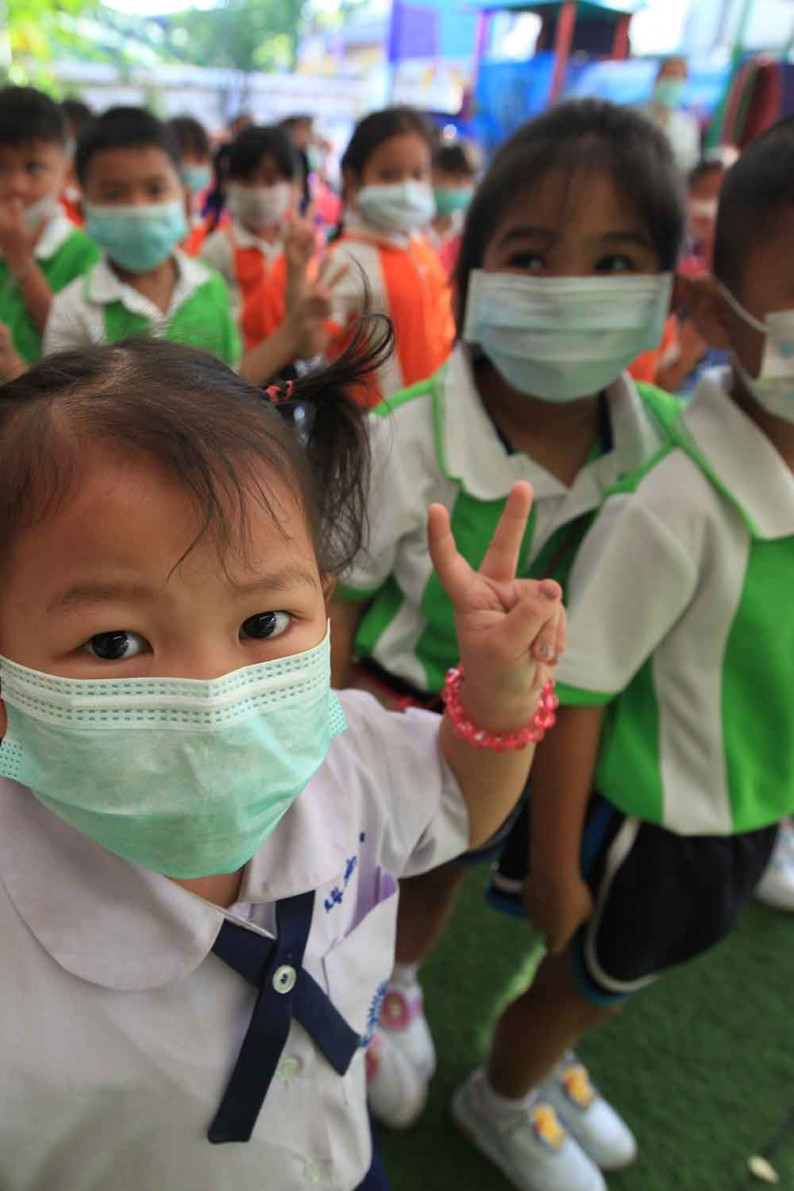
New Covid-19 infections could surge to 10,000 or even 30,000 cases a day early next year, driven by the highly contagious Omicron variant, a senior Public Health Ministry official said on Monday.
The warning was issued as the number of new Omicron cases soared five-fold, from 104 on Tuesday to 514 on Sunday.
The ministry has drawn up three possible scenarios, permanent health secretary Kiattiphum Wongrajit said.
In the best-case scenario, the country could be looking at 10,000 new patients and 70 fatalities a day as early as late January, and 15,000 new cases and 100 deaths in the second-best projection.
In the worst-case scenario, the figures could jump to 30,000 new cases and 180 deaths a day if Omicron infections quickly spike.
Graphs presented at the briefing showed the daily tally of new Omicron infections peaking in late January or early February in the best and second-best scenarios.
Dr Kiattiphum said the situation in these two scenarios would be brought under control in one or two months.
In the worst outlook, new infections would reach their peak in early March before the numbers gradually declined.
Dr Kiattiphum said it would take three to four months for health authorities to control the situation in the worst outlook.

The ministry did not expect the fatality rate from the new variant to be as high as from the Delta variant, but it would likely spread faster .
Daily new infections and deaths currently continue to decline with more people having been vaccinated, but Omicron threatens to reverse that trend, with Thailand recording its first case of Omicron on Dec 6 and the first community infection on Dec 20.
Dr Kiattiphum said strict health measures, the vaccination campaign and cooperation from the public, including strict obersvation of social distancing rules, would determine the success or failure of the fight against Omicron.
"We are at a crossroads again," Dr Kiattiphum said.
Cases jump
Omicron cases jumped five-fold, from 104 last Tuesday to 514 on Sunday, the Centre for Covid-19 Situation Administration (CCSA) reported on Monday.
“Two-thirds of the Omicron cases were arrivals and the other third were people in close contact with infected people,” CCSA spokeswoman Apisamai Srirangson said.
The biggest cluster originated with a couple who returned to Kalasin from a visit to relatives in Belgium on Dec 10. They had infected 21 other people as of last Friday.
The Delta variant still accounted for 56% of new cases in the country, but Omicron was expected to take over very soon, according to the ministry.
Holiday surge
Opas Karnkawinpong, the Department of Disease Control director-general, said the ministry was concerned about a likely rise in new cases after the holiday season as a result of the movement of people and their close contacts with others.
Infections would rise from people returning to home provinces to mark the New Year with their families, and revellers at New Year countdown events.
"A wider spread of the virus is expected after the New Year celebrations," Dr Opas said. He advised offices that have adopted the work-from-home format to continue with it to help limit the spread of the disease.
Although the country is under threat from the new variant, Dr Kiattiphum said, hospitals nationwide had sufficient beds to handle the situation because of the low 10% occupancy rate at present.
"We have more than enough hospital beds," he said. "We have been through Delta, which was deadlier."
